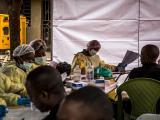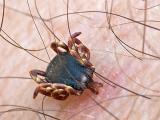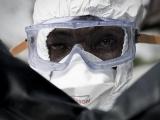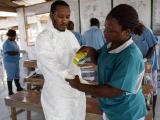Nov 19, 2012
Uganda reports 4 cases of Ebola hemorrhagic fever
Uganda's Ministry of Health has reported four cases of Ebola hemorrhagic fever—including three fatal ones—in Luwero district in Central Uganda, the World Health Organization (WHO) said Nov 17. Two of the cases have been confirmed by polymerase chain reaction and serology tests at a national lab in Entebbe as caused by Sudan strains of Ebola virus, the WHO said in an update. Seven close contacts of the case-patients have also developed symptoms and are being isolated, and the WHO has teamed with local health officials to combat the outbreak. Last week media outlets reported the three fatal cases but not the nonfatal case. Western Uganda experienced a 24-case Ebola outbreak in July and August.
Nov 17 WHO update
Sudan's yellow fever outbreak grows to 400 cases, 150 deaths
An outbreak of yellow fever in the Darfur region of Sudan has grown to 400 cases, including 150 fatal ones, according to Xinhua, China's state news agency. Last week the WHO reported 329 cases and 97 deaths from the disease. "Great quantities" of yellow fever vaccine have arrived in Sudan, the story said, and will total 4.2 million doses in the coming days. The vaccination campaign will begin by the end of this week, and quarantine centers have been set up throughout Darfur, which is in western Sudan.
Nov 18 Xinhua story
Nov 13 WHO update
House committee presses feds to comply with BioWatch request
One of the US House of Representatives committees investigating reported problems with the federal BioWatch program for detecting pathogens that might signal a bioterror attack issued letters to federal officials on Nov 13 asking them to fulfill earlier requests for information and asking about more details that have emerged in an investigative series by the Los Angles Times. The requests came from the House Energy and Commerce Committee, which first sent letters to the Centers for Disease Control and Prevention (CDC) and the Department of Homeland Security (DHS) on Jul 19 soon after the initial Times report appeared. The Times reports have raised questions about how useful the current BioWatch system is for detecting threats, as well as the viability of the next-generation air sampling system that is currently under development. In September two other House committees held a joint hearing on the BioWatch issues, and a report from the General Accountability Office raised questions about the process federal officials have used in pursuing the new technology. In the new requests for information, the House Energy and Commerce Committee asked DHS Secretary Janet Napolitano to comply with its original request and furnish newly requested materials by Nov 26. In its other letter, the committee told CDC Director Tom Frieden, MD, that the agency hasn't adequately responded to its first request and asked for more information about a private briefing with one of the CDC's senior scientists and about an Oct 23 Times article that claimed the system used defective equipment for 2 years before reportedly secret tests identified a problem in 2009.
Nov 15 Times story
Nov 13 House Energy and Commerce Committee letters to CDC and DHS
Sep 13 CIDRAP News story "BioWatch program faces GAO, congressional scrutiny"
Three European countries see cryptosporidiosis rise
The United Kingdom, the Netherlands, and Germany are reporting a spike in cryptosporidiosis that started in August and could stem from heavy rainfall or a combination of factors, according to a risk assessment today from the European Centre for Disease Prevention and Control (ECDC). The Netherlands raised a red flag about the infections in October, after labs reported an increase in positive samples that has eased off after week 38 but is still high for this time of the year. England and Wales also reported a similarly large seasonal increase, with 2,173 cryptosporidium cases reported since the end of August, compared with 1,430 on average for the same weeks during the previous 6 years. Germany also noted a 1.6-fold increase over a similar period compared with the past 5 years. The ECDC said the increase seems real and not related to a surveillance artifact. Epidemiologic investigations so far haven't revealed a single common source but suggest several possible causes, including climatic conditions or a widely distributed commonly consumed food product with a relatively long shelf life, the ECDC said, adding that the officials in the Netherlands are exploring the possibility of contaminated bottled water. Though the overall threat is low, countries should be alert for similar rises incases, especially in people at high risk, the agency said.
Nov 19 ECDC risk assessment

















